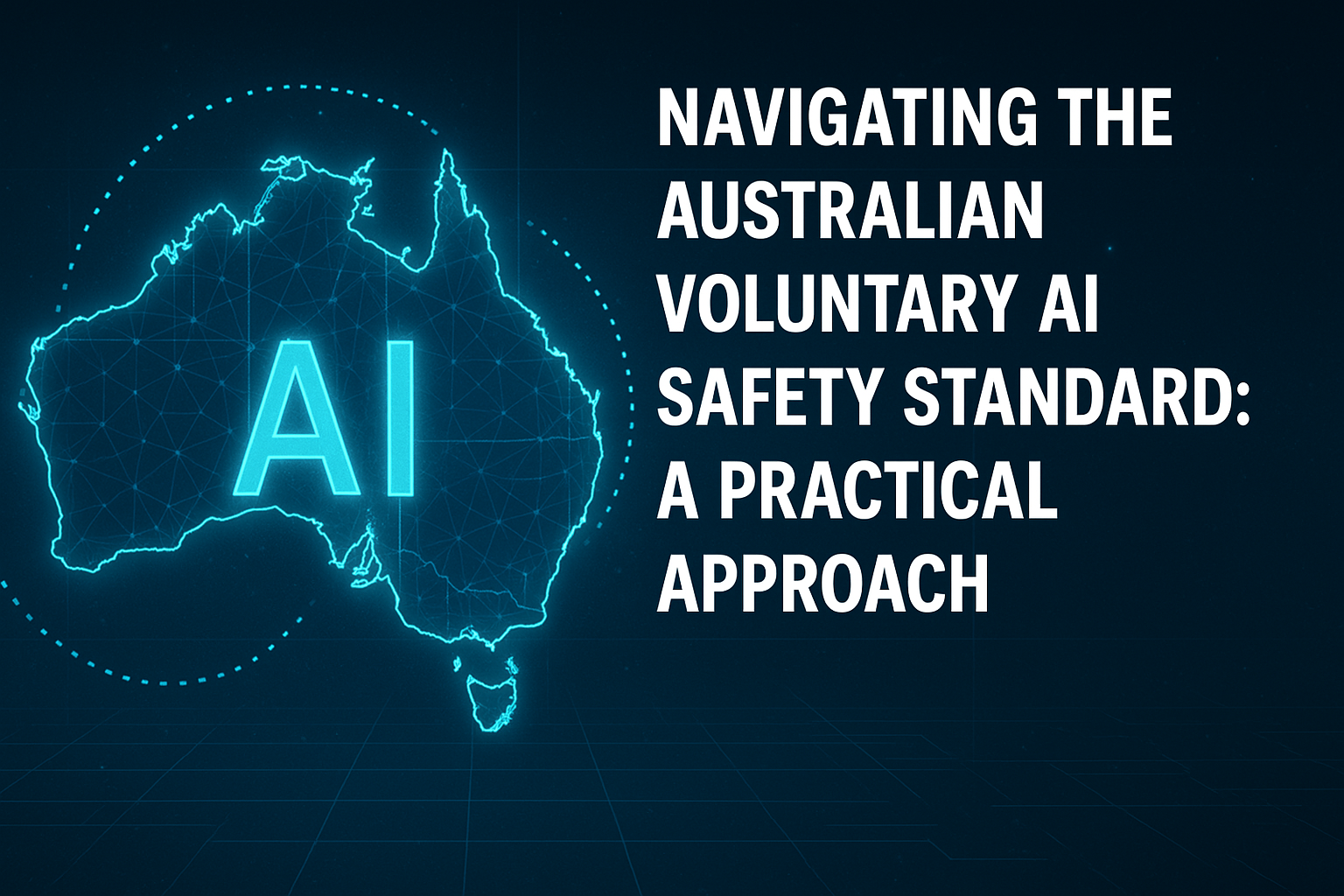Navigating the Australian Voluntary AI Safety Standard, A Practical Approach

🚀 Navigating the Australian Voluntary AI Safety Standard: A Practical Approach
As artificial intelligence becomes increasingly embedded in Australian business operations, understanding how to implement safe and responsible AI practices is no longer optional—it's essential. The recent release of the Australian Voluntary AI Safety Standard marks a significant step toward establishing consistent practices for organisations adopting AI.
Introducing our free Gap Assessment template
Explore our Australian Voluntary AI Safety Standard Gap Assessment Template →
🔍 Why the Standard Matters
The Australian Voluntary AI Safety Standard provides a comprehensive framework through 10 guardrails that help organisations develop and deploy AI systems safely and responsibly. Beyond mere compliance, adopting these guardrails offers tangible benefits:
- 🛡️ Risk mitigation - Identify and prevent AI-related harms before they occur
- 🤝 Enhanced trust - Build confidence with customers and stakeholders
- 🌐 International alignment - Ensure compatibility with global standards
- 🔮 Future-proofing - Prepare for potential mandatory regulations down the track
For many organisations, the challenge isn't understanding why they should implement these standards—it's figuring out how to practically apply them within their unique operational contexts.
Moving from Documentation to Implementation
The standard's 10 guardrails cover everything from accountability processes and risk management to stakeholder engagement and record-keeping. While comprehensive, translating these guardrails into actionable steps requires a systematic approach. Through my work with organisations across various sectors, I've found that effective implementation typically follows three phases:
- 📋 Assessment: Understanding your current AI footprint and identifying gaps in your governance framework
- 🔧 Alignment: Developing tailored processes that align with the standard while serving your business objectives
- ▶️ Action: Implementing processes with clear ownership and accountability
- 📊 Making Assessment Manageable
One of the most challenging aspects of adopting the standard is conducting a thorough gap assessment. This process requires mapping each requirement against your current practices and identifying areas for improvement. To simplify this process, I've developed a comprehensive gap analysis tool specifically designed for the Australian Voluntary AI Safety Standard. This tool:
- 🧩 Breaks down each guardrail into specific, actionable requirements
- 📈 Provides a structured framework for tracking compliance progress
- 🚦 Uses intuitive visual indicators to highlight areas needing attention
- 📝 Creates automatic documentation for audit purposes
💎 Beyond Compliance: Creating Value
While compliance is important, organisations that approach AI safety standards as an opportunity rather than an obligation often discover unexpected benefits:
- ⚡ Improved AI system performance and reliability
- 🔐 Enhanced data governance practices
- 👥 Greater stakeholder confidence and engagement
- 🏆 Competitive differentiation in the marketplace
The organisations seeing the greatest success are those that integrate these standards into their broader digital transformation strategies, viewing responsible AI as a cornerstone of innovation rather than a regulatory burden.
🔭 Looking Ahead
As Australia's AI landscape continues to evolve, organisations that proactively adopt these standards will be better positioned to navigate future regulatory requirements. The Voluntary AI Safety Standard offers a blueprint not just for compliance, but for building AI capabilities that are trustworthy, effective, and aligned with Australian values and expectations.
If you're looking to develop a practical roadmap for implementing the Australian Voluntary AI Safety Standard in your organisation, feel free to reach out for a conversation about how these guardrails might be tailored to your specific context and objectives.
All the best!
Ben

Comments (0)
Be the first to comment